Art Fairs
Got $750,000? Here Are 10 Truly Extraordinary Artworks You Can Buy at Frieze Masters
Need a Baroque painting? Perhaps a sarcophagus? You've come to the right place.
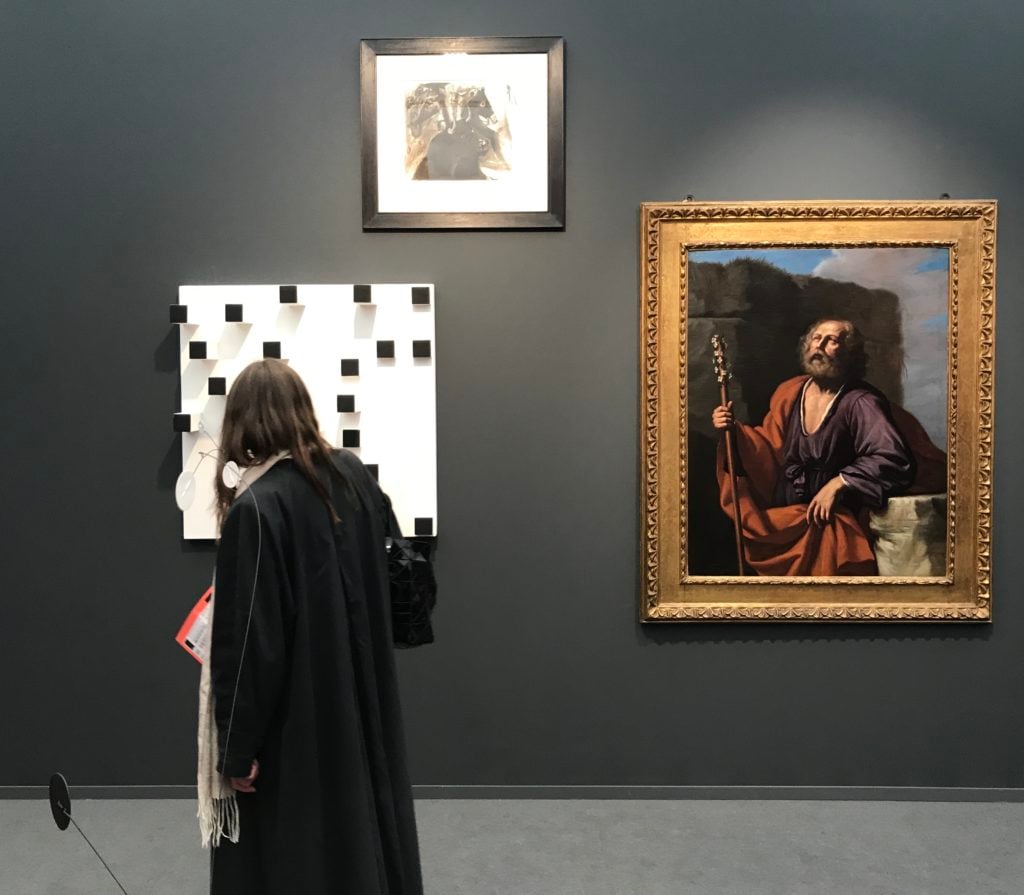
Need a Baroque painting? Perhaps a sarcophagus? You've come to the right place.

Andrew Goldstein

With artistic treasures from both the recent and distant past, Frieze Masters is a welter of incredibly diverse extraordinariness, with epochs, contexts, and mediums shifting dizzyingly from booth to booth. It’s enough to make a visitor feel very cultivated and a little crazy at the same time, akin to a day of art-historical speed dating.
But there is a through-line that collectors can cling to while navigating this cornucopia, and it’s a mercenary one: For about $750,000 (give or take $100,000 or so) you can walk away with pretty much any kind of world-class object you could want. Here are 10 works in that price range to covet like mad.
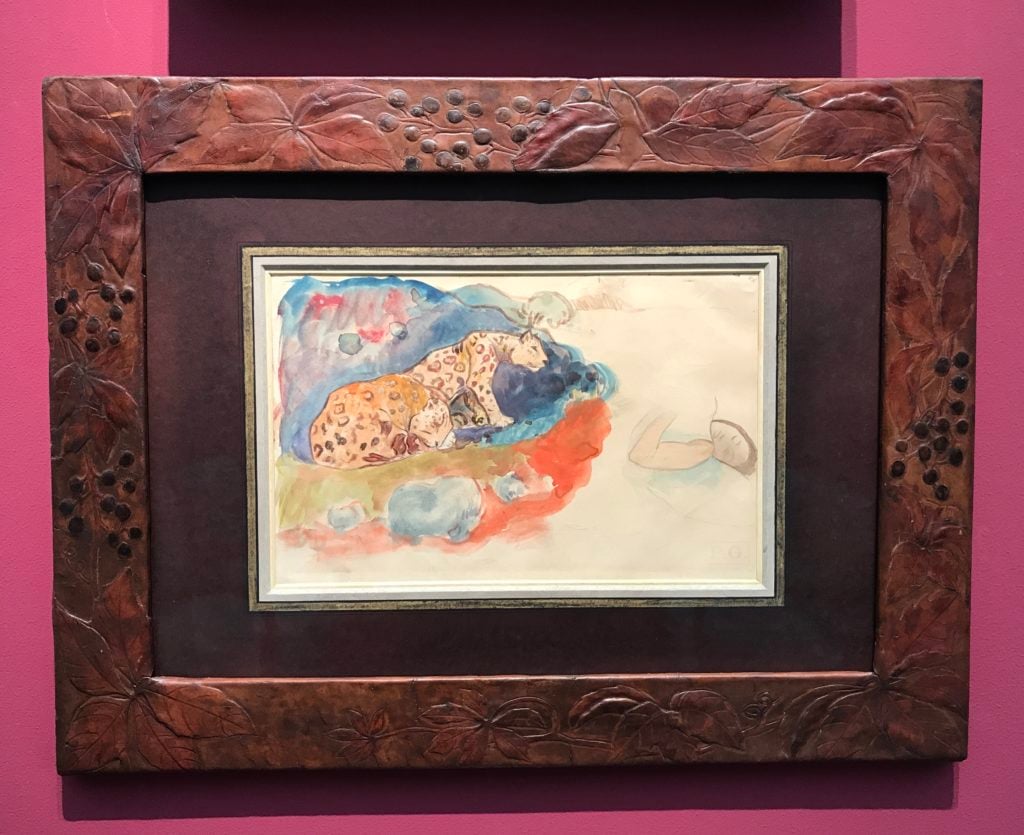
An artist with one of the most sensational—and controversial—biographies of the 19th century, Paul Gauguin created dreamlike evocations of the exotic sights he encountered in his travels, mixing fact and fiction to mesmerizing effect. Oftentimes, the facts and fictions that came alive in his paintings had their origins in his sketchbooks, which he used as a kind of conceptual palette, intermingling and matching visual ideas in the same way one mixes paints.
Coming from a notebook that Gauguin took on both of his famous trips to Tahiti, this page expresses both the artist’s biography and free-associative, hopscotching style of working. On the left, he has used brown ink and watercolor to vividly depict a pair of leopards that he had originally seen alongside Vincent van Gogh when a celebrated menagerie toured through Arles in 1888; to the right is a drawing of a young Tahitian woman that Gauguin created as a study for his 1891 painting The Loss of Virginity, which pairs the nude, uncannily, with a fox; on the back of the page is a sketchy self-portrait in profile of the artist, along with drawings of two women in Breton costumes that he had originally seen during his trip to Brittany in 1887. Evidently, he came back to this page again and again over time, creating a palimpsest of his experiences.
After Gauguin’s death, his sketchbooks gained some brief notoriety when the artist Paco Durrio—a devoted patron of the painter—exhibited them at Paris’s Société du Salon d’Automne, and thereafter this page entered a distinguished private collection in Portland, Oregon. Now at Frieze Masters, it offers a chance to vicariously accompany Gauguin on his legendary travels.
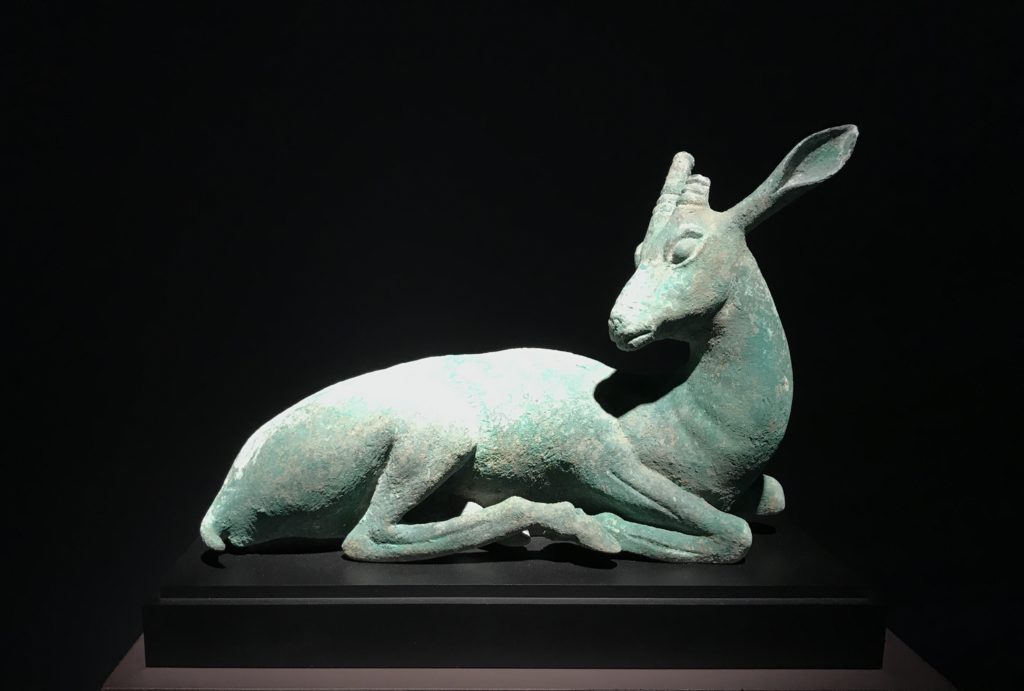
Cicero may have gone gaga for imported Greek statuary, as Mary Beard explained, but if you were a fancy member of the ancient Roman elite—perhaps with a nice little villa in Pompeii or Herculaneum—and had exquisite taste for home-grown art, this bronze gazelle may have occupied pride of place in your home.
Finely observed, with its legs delicately folded beneath and the ridge of the spine running in an S-curve along its back, the sculpture speaks to the obsession Romans had with exotic animals, often importing them from overseas to keep as pets, or to hunt. The gazelle, here richly patinated with verdigris the color of unpolished aquamarine, would have come from Rome’s colonies in Africa, and it swiftly up and galloped away in the first hours of the vernissage, selling from one private collection into another.
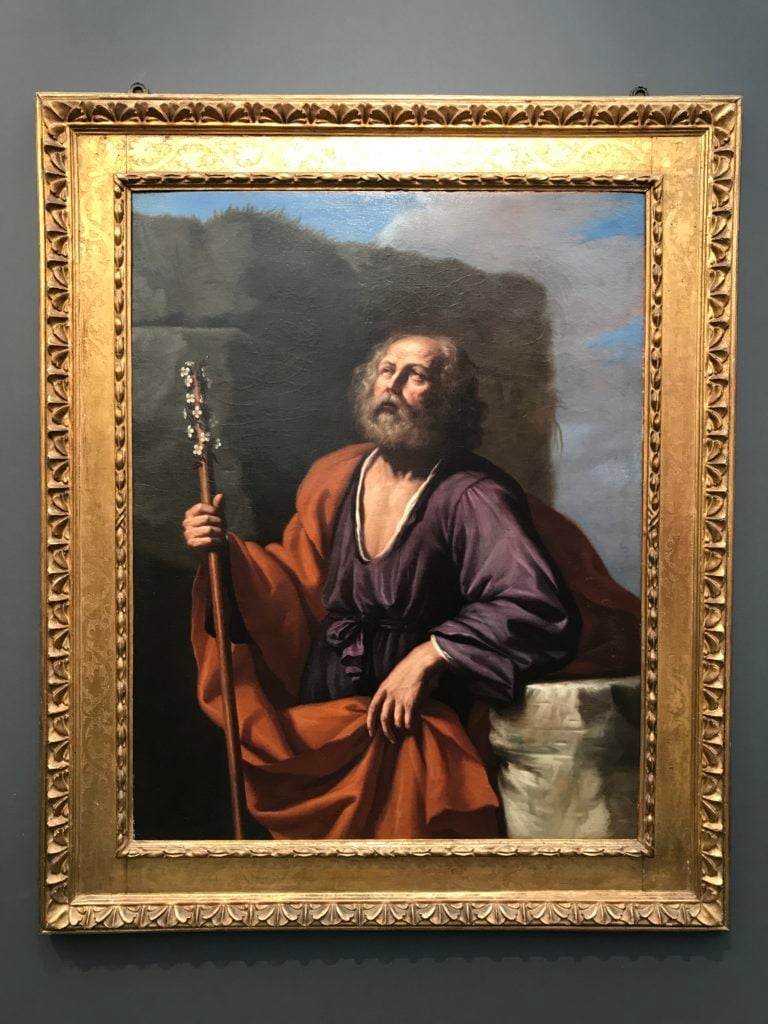
Named “Il Guercino”—or “the squinter”—because he was badly crosseyed, Giovanni Francesco Barbieri became famous (and very wealthy) in the Baroque era for his impassioned, fluid paintings, executed in a style indebted to Caravaggio, Caracci, and his close contemporary Guido Reni.
This canvas, a portrait of the New Testament patriarch manqué Joseph, is as notable for its masterful rendering as it is for the odd, somewhat humorous religious scene it depicts. Coming from the so-called Golden Legend, a 14th-century compendium of apocrypha, the story goes that when it came time for the Virgin Mary to marry, the high priest of the temple in Jerusalem called upon all the Jewish men of marriageable age to present a branch—sometimes rendered, more phallically (and less sensibly), as their “rod”—for inspection, with the one that burst into flowers signaling the winner of the 12-year-old girl’s hand in matrimony.
In the painting, Guercino shows us Joseph walking to the temple as his rod bursts miraculously into flower. Considering that this omen means that he’s about to get cuckolded by the most powerful deity in the universe, one might say he got the short end of the rod here, and his captivating expression falls somewhere between “Huh?” and “Oy.” There are other examples of this scene by the artist at the Pinacoteca Nazionale in Bologna and the Galleria Palatina in Florence, but, according to the gallery, this is the painting where Guercino captures it best.
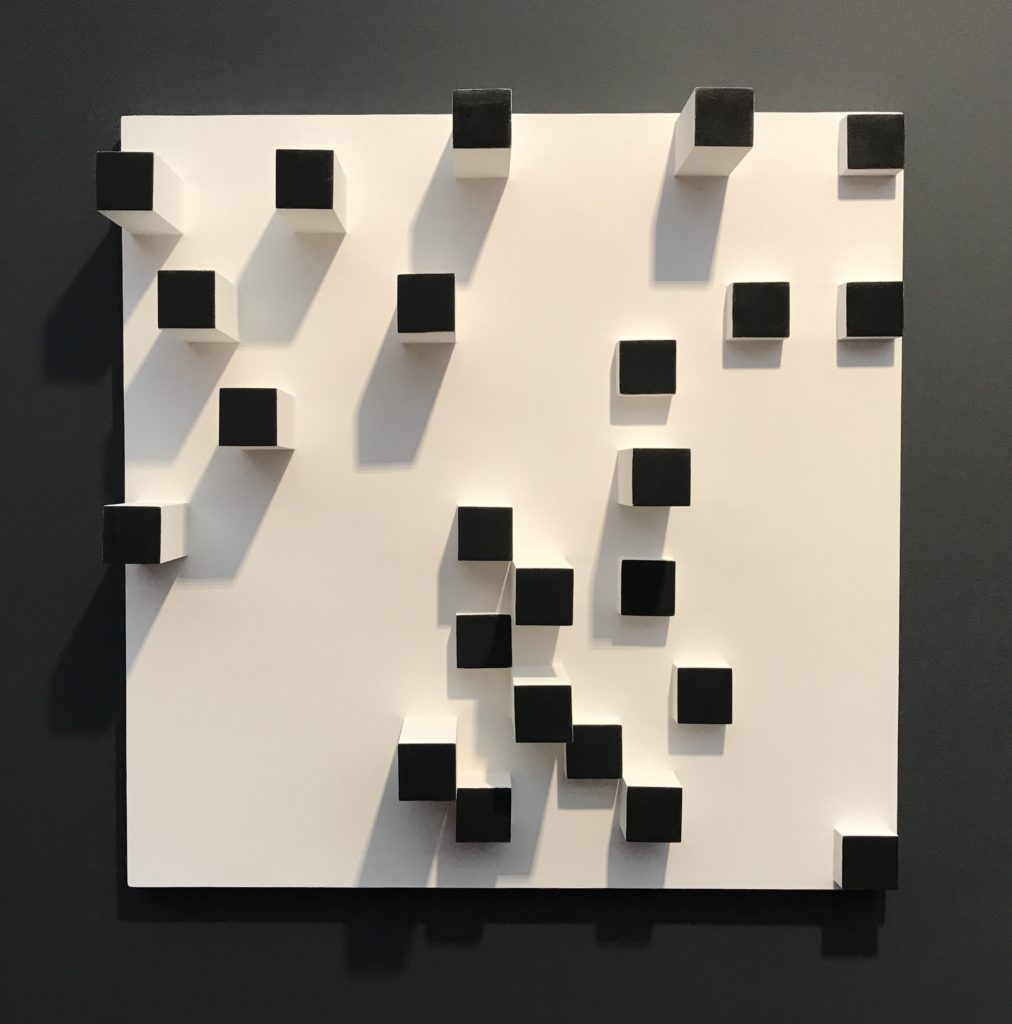
Presented right next to the Guercino as part of Hauser & Wirth’s third collaboration with the London Old Master dealers Moretti, this Lygia Pape furnishes a gripping fast-forward to the narrative of art history. Whereas Guercino draws upon Caravaggesque chiaroscuro to model his forms, Pape—a driving force in the Brazilian Neo-Concrete movement—has her stark geometric composition jut out into three-dimensional space to create a constantly changing play of light and shadow. Get both of these, display them side-by-side in your house, and blow some minds.
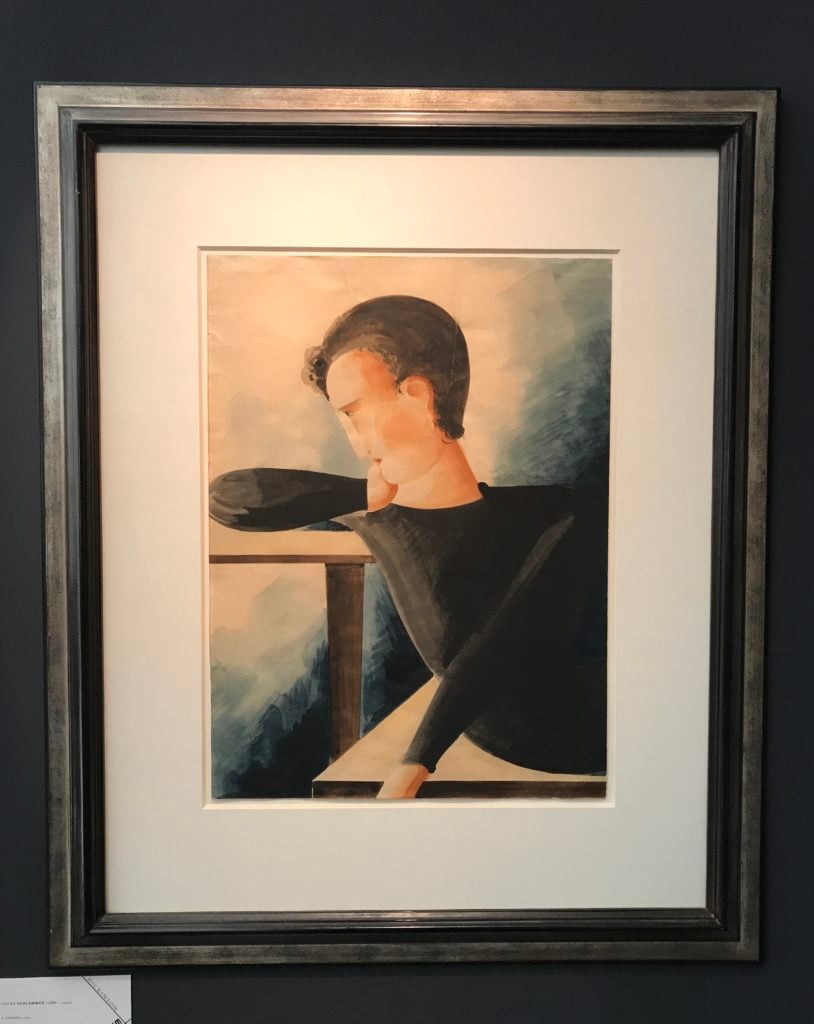
This portrait by artist Oskar Schlemmer comes from the same period he created his illustrious Bauhaus Staircase, which has long held witty court over MoMA’s own stairway, but it shows a very different side of the great German artist. An instrumental figure in the Bauhaus movement who was recruited to the school by Walter Gropius, Schlemmer was known for choreographing dance pieces and also working that same interest in balletic movement into his paintings, rendering his figures as three-dimensional volumes in space.
In this portrait, however, he pays less attention to the notion of physical movement and more to the inward psychology of the sitter (the title translates from German to something like “The Pensive Thinker”). It’s rare to see such an effective evocation of consciousness in such a stylized picture.
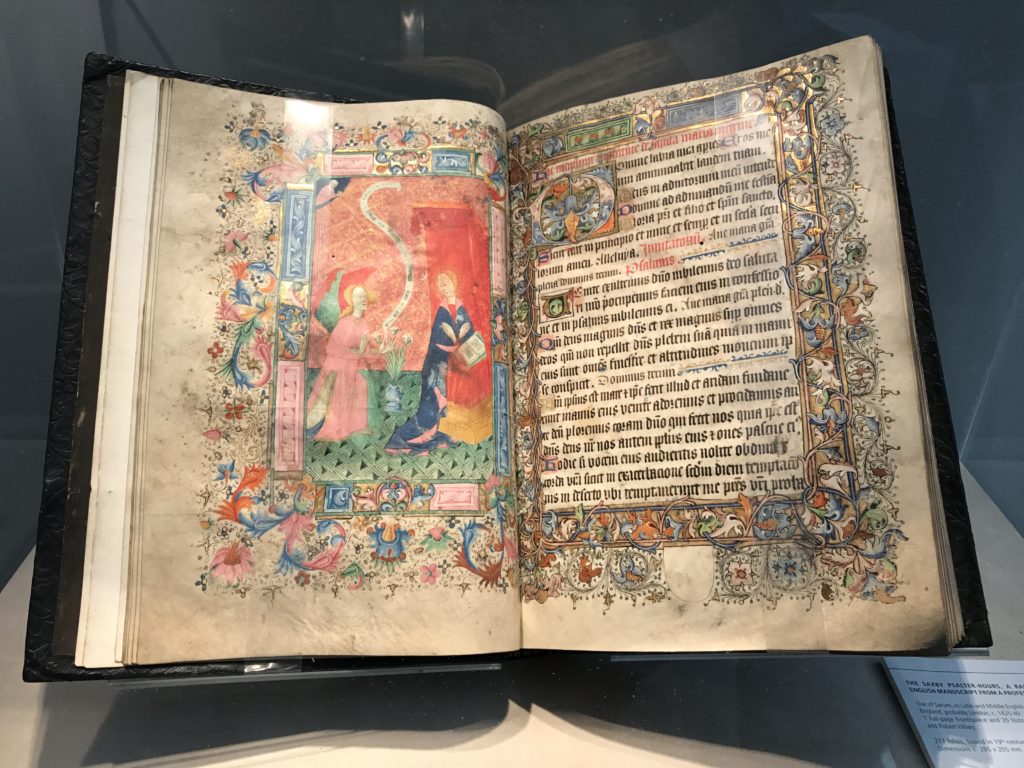
It isn’t so easy to find a top-quality English psalter-hours—an illuminated book of psalms and other devotional materials—because very few of them survived the twin forces of the erosion of the Anglican Church and the country’s onrush of secularization and technological advancement. This one is a sterling example, though, with 21 vibrantly illustrated pages like the ones displayed in the fair, depicting biblical scenes in bright colors and clothed in borders of effusive flora. A psalter-hours of the kind a lay person would have owned in the pursuit of armchair monasticism, the book comes from a private collection in the United States and would look smashing next to a nice Thomas Ruff nude, or perhaps a Damien Hirst vitrine.
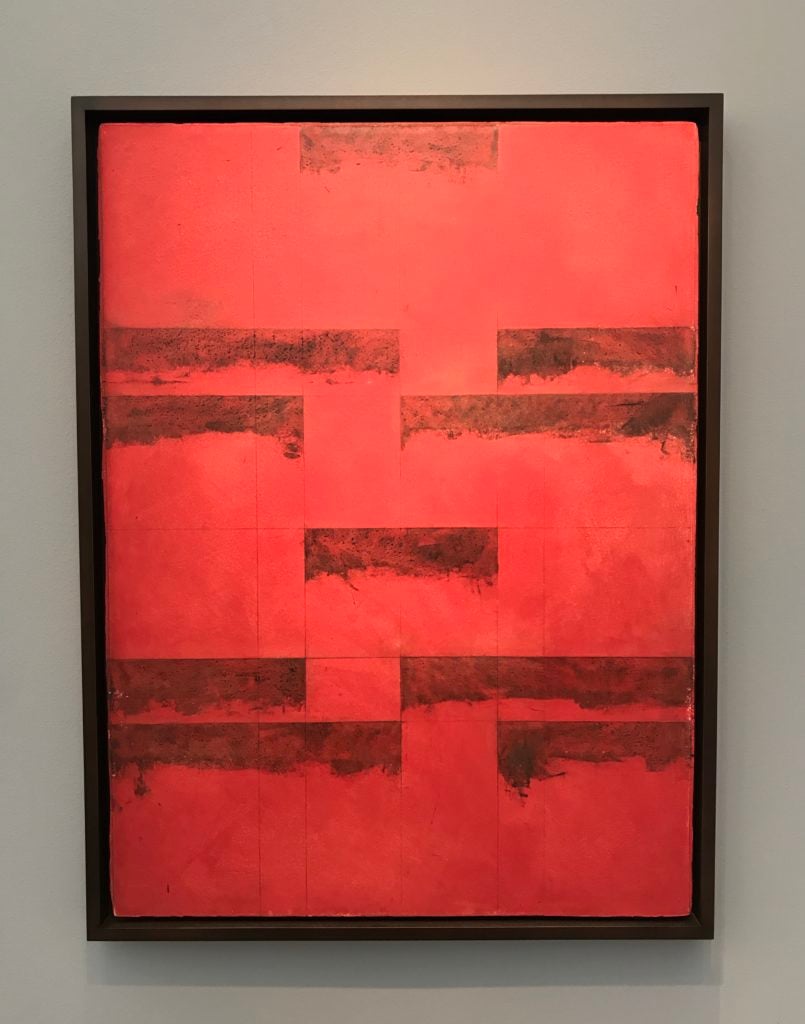
Devotional art has changed a bit since the 15th century, and a tasteful example can be found at Lévy Gorvy’s booth in this small abstraction by Brice Marden. Made as part of the formidable abstract painter’s nine-year quest in the 1980s to create stained-glass windows for Basel’s cathedral, this is a study for one of the six panels he envisioned, each based on the elemental colors: red, blue, yellow, green. Marden’s labor was for naught; the church declined to give him the commission. The studies, however, are beautiful, and provide a glimpse of the artist’s personal take on spirituality.
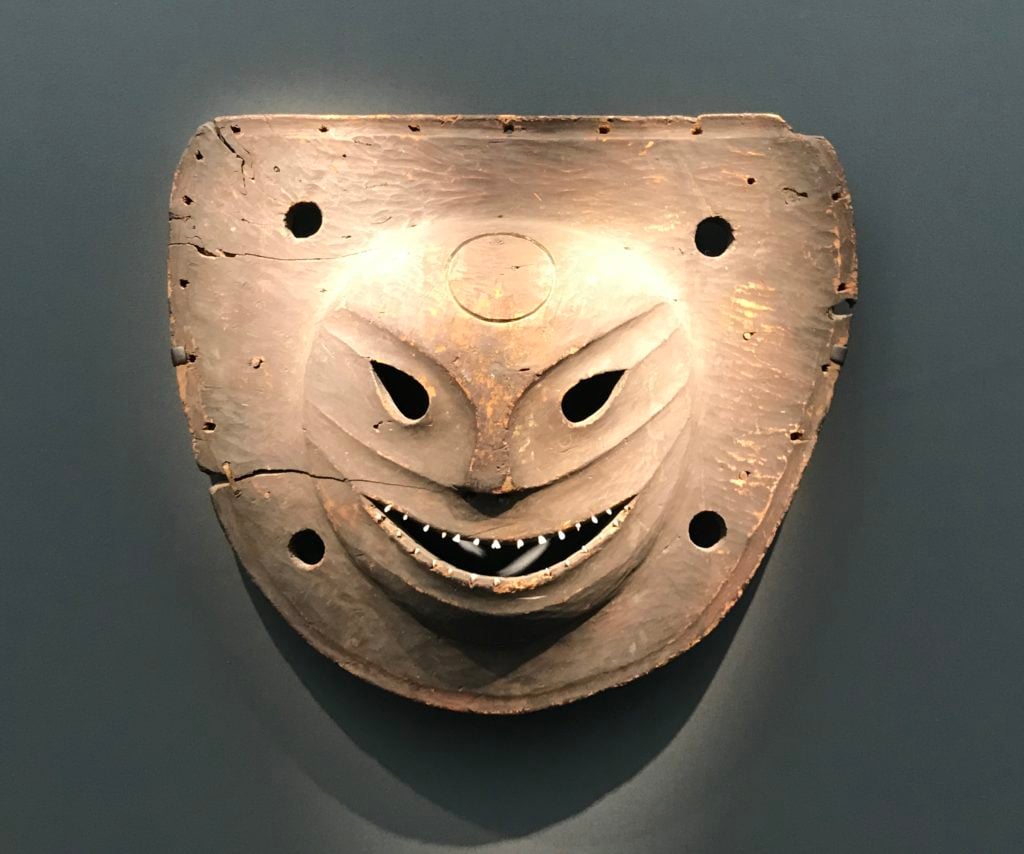
Speaking of spirituality, a whole other universe of belief was on view at Donald Ellis Gallery. This mask was used by a shaman of Alaska’s indigenous Yup’ik people for winter ceremonies; the four holes in the corners stand for the openings the tribespeople cut into the ice when hunting for seals, which the monstrous face in the middle is that of an Inua, a supernatural figure caught in transformation halfway between a human and an animal.
According to Donald Ellis, the eminent dealer of Native American art, this is the largest and most beautiful example of its kind in the world—a prize he had sought to acquire for more than 30 years from a private collection. A month ago, he did, and now the mask awaits a new shaman to reawaken its powers.
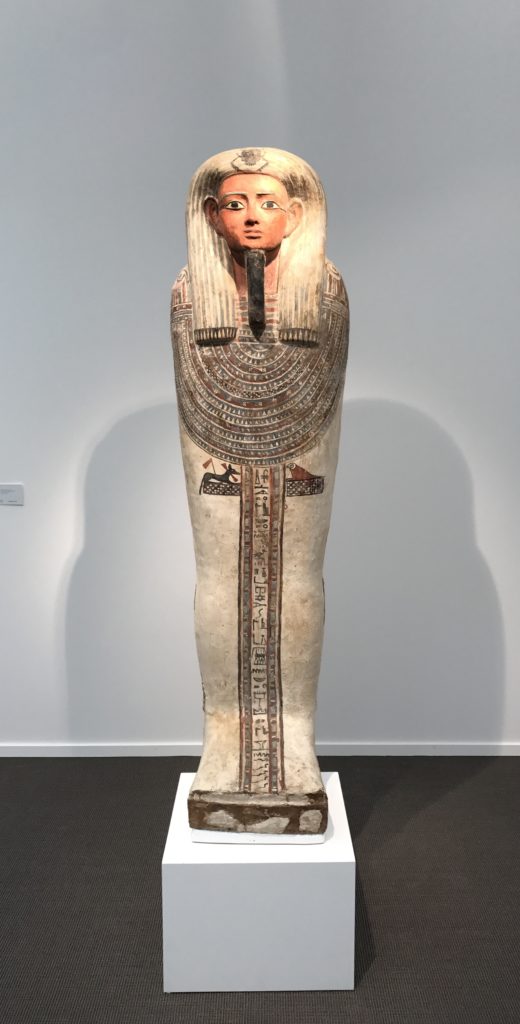
So many collectors focus on the hottest artist, the quick flip, the status acquisition. But what about more lasting, eternal concerns? Say, the afterlife? For those looking to take the long view, you could do worse than this extraordinary sarcophagus from the late period of the XXVI dynasty.
White-bodied in tribute to Osiris, who was garbed in white, this uncommon example features both animals—the gods Anubis and Ra-Horakhty—and a column of hieroglyphs that is difficult to decipher, since it’s in idiosyncratic Upper Egyptian, but which speaks of a rich offering of beef and wine, suggesting a wealthy inhabitant. This sarcophagus is probably from El Hibeh and would have been placed inside a larger stone container and buried in a subterranean chamber alongside the offering; today it has very little restoration, and is in splendid condition.
Joseph Coplin of New York’s antiquarium, ltd. had never participated in a fair before, but when his old Vassar friend Jeanne Greenberg-Rohatyn invited him to do a joint-booth at Frieze Masters, he marked the occasion by acquiring this sarcophagus for a treasure worthy of the event.
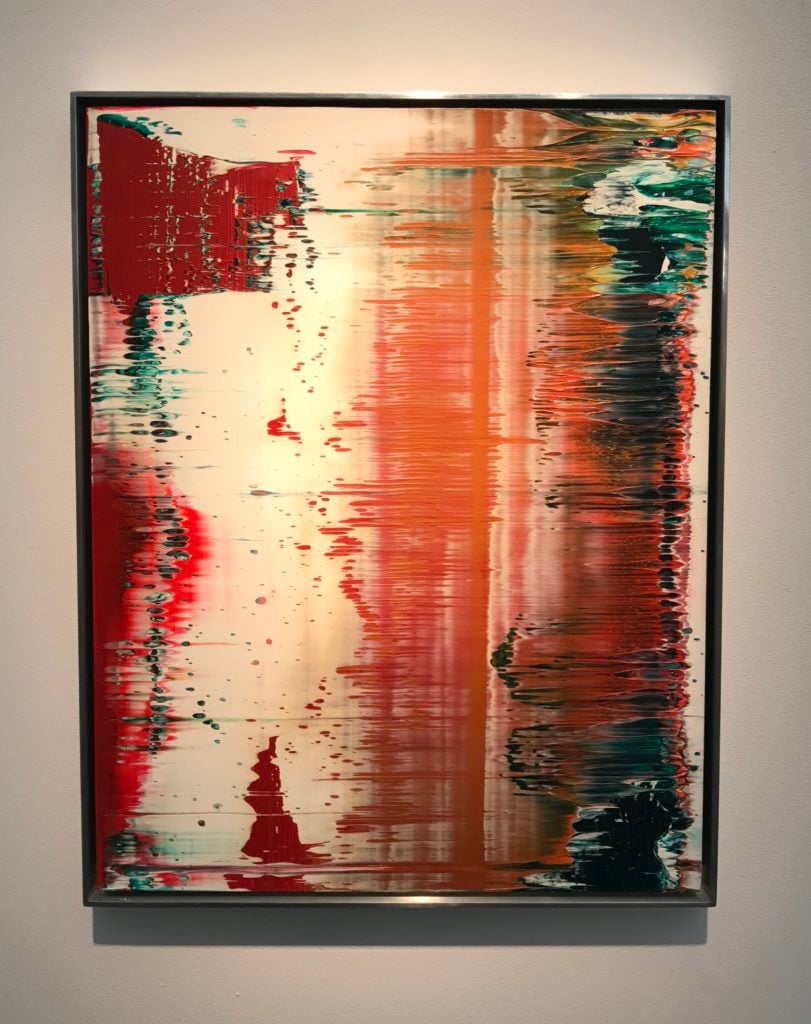
Roughly 14 by 11 inches, this pocketbook-sized painting is one of 110 miniature unique canvases that Gerhard Richter made in 1996 to raise money for the realization of Atlas, his compendium of 40 years’ worth of newspaper clippings, ephemera, and other source material that forged the underpinnings of his artistic career. All of the paintings in the series were squeegeed on a panel of aluminum composite called Alucobond, this one gets you a potent dose of Richter’s illusionistic layering of space and color for a directly proportional fraction of the price of one of his larger abstractions.
Is this worth more than a very nice sarcophagus, or an oddly endearing Guercino? Such are the questions raised by Frieze Masters; they could take a lifetime to ponder.